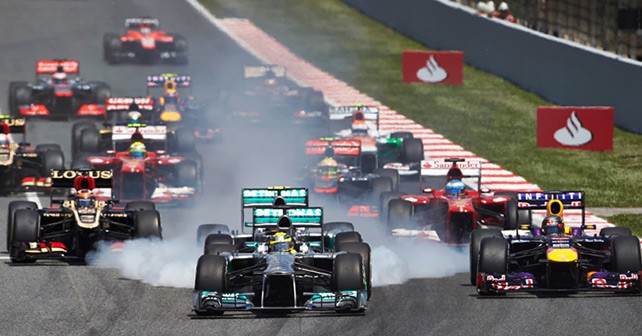
With only a third of the 2013 season concluded, talks about 2014 are already gaining traction. And while there’s still no favourite to win this year’s title, it’s almost certain that the car-and-driver combo that manages their tyres best will be at an advantage. This is despite the fact that Pirelli will be altering their tyre compounds from the Canadian Grand Prix onwards. Nevertheless, McLaren are close to writing off their 2013 season to solely focus on 2014.
Frankly, I’ve had an overdose of discussions surrounding Pirelli and their over-influence on the sport – so, I’m going to stay away from that in this column. And I hope to do so for the rest of the 2013 season as well (I highly doubt it’s possible though). Putting all the controversial topics aside, the one good thing is the provision of an extra set of tyres for each team in the first Free Practice session on Friday. The rationale behind this is to give the teams an option to run a ‘test’ or ‘reserve’ driver (also called the ‘third’ driver) since the opportunities for testing in Formula 1 are very limited.
In my view, from 2014, the running of third driver in the FP1 session should be made compulsory with either one or both cars. Given that a set of Pirelli tyres don’t last more than 22-25 laps at best, the opening minutes of the session, which are usually spent in the garage after the first set of installation laps, can be used to assess new talent. This would mean putting aside 30 minutes of the 90-minute session for young drivers. Since the engineers and mechanics are already present along with all the other equipment, this could work out to be a far more cost effective solution than running a separate Young Drivers Test in the season. Given that the opportunity to test new talent, and give them adequate track time, doesn’t exist much in current day Formula 1, this would be a step in the right direction if implemented.
The other aspect of 2014 that already excites me is the possibility of pre-season testing starting in the last week of January. This means that the wait for the new season after the 2013 Brazilian Grand Prix will be around 60 days only (Hurrah)! Since new powerplants are being introduced next season, an early test would give manufacturers some additional time to work on their new cars and engines. Despite this, though, if anyone faces major issues during this test, they will undoubtedly be on the back foot going into the 2014 season.
On the regulations front, there’s a possibility of a ‘turbo lag penalty’ being introduced in 2014. Unlike existing regulations that penalize drivers in the pits – i.e. though ‘drive-through’ and ‘ten-second stop-go’ penalties – the turbo-lag penalty will penalize drivers on track by slowing the car for the duration of a few seconds. And while this penalty is currently under discussion by various ‘Groups,’ it’s not a good idea in my view. A car that’s penalized under this rule will be lapping a few seconds (or more) slower than the actual race pace (yes, you could say lapping at the pace of a Marussia or Caterham) and could pose to be a safety hazard. Plus, I think this sets a bad precedent to disadvantage drivers on track. Battles on the racetrack should be fair.
And, last but not least, Adrian Newey commented that the 2014 cars may not differ much visually from the current generation cars. This too is good news from a view that fans are now accustomed to seeing F1 cars with wide front wings and narrower rear wings. Retaining this visual appeal will be important considering that the cars will be virtually all-new under the skin. I remember how shocked I was when I first saw the 2009 spec cars, followed by the ‘platypus’ nose machines in 2012. Some consistency in Formula 1 is needed.























Write your Comment